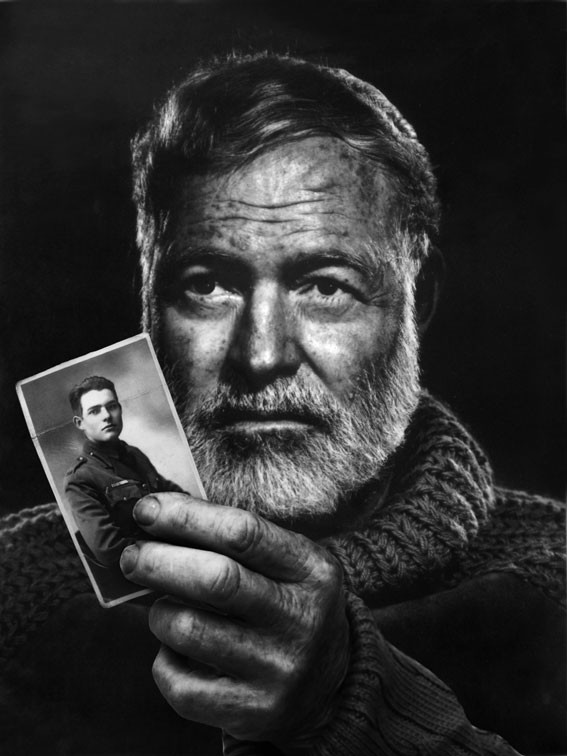Monuments
Hemingway Poem to Edward McKey Bronze Plaque
ISOB Edward M. McKey - American Red Cross
Ernest Hemingway Wounding Site- World War 1
Hemingway Museum of the Great War
Hemingway Plaque - Saint Hubert
Museum of Reclamation (Museo dell Bonifica) - World War 1 Exhibit and Hemingway’s Bed
1st Army Press Corps Plaque - Normandy

Ernest Miller Hemingway, the famous American author, served with the American Red Cross (ARC) in World War 1 in Northeast Italy in 1918. While serving in a canteen operation on the Piave Front near the town of Fossalta di Piave, the 18 year-old Hemingway was severely wounded on July 8, 1918 by in a mortar attack. The blast killed an Italian Soldier and wounded several others, and Hemingway with over 200 shards of metal in his body, spent most the rest of the war in a hospital in Milan.
This is a summary of his World War 1 military experience in Italy: He trained in New York City for a few weeks and in June 1918 arrived in Milan Italy where he received his first assignment to assist in the cleanup efforts at a munitions plant explosion. He was then transferred to Schio, Italy in the foothills of the Dolomites where he served with the First Ambulance Section ARC. With the Battle of the Solstice (2nd Battle of the Piave) commencing on June 15, 1918, Hemingway desired to be transferred to a more active assignment. He was transferred to the Piave Front near Fossalta di Piave with the 4th Section ARC where he served in a canteen operation riding his bicycle distributing coffee, chocolate, and cigarettes to Italian soldiers on the banks of the Piave river defensive line. Then, on the night of July 8, 1918, an Austrian mortar shell exploded just feet away from Hemingway. It killed an Italian soldier, wounded others and blasted Hemingway unconscious. "Then there was a flash, as when a blast-furnace door is swung open, and a roar that started white and went red," he wrote in a letter home. Despite his injuries, some claim, Hemingway carried a wounded Italian soldier to safety and was injured again by machine-gun fire for which he was awarded the Italian Silver Medal for Valor. He was wounded very close to where his good friend, Lieutenant Edward McKey, ARC, was killed (See ISOB McKey Memorial and Hemingway Wounding Site on this website for more information). Some consider McKey the model for the character Frederic Henry in A Farewell to Arms.
He was treated in various hospitals ending up in Milan where he has a now famous love affair with a nurse – the basis of his story line in A Farewell to Arms. After time in the hospital, he returns to service in the mountains near Bassano della Grappa until he end of the war.
Hemingway’s experience in World War 1 in Italy contributes to several of his works. The most famous, A Farewell to Arms and three short stories set in Italy featuring Nick Adams, (who some see as Hemingway’s alter-ego) “Now I Lay Me,” “In Another Country” and “A Way You’ll Never Be.” But other experts believe that this experience in Italy also contributed to many others of his novels through the many characters dealing with the wounds of war.
WORLD WAR 2 EXPERIENCE: Hemingway also served as a correspondent for Colliers during World War 2. He landed in Europe on the D-Day beaches in mid-July 1944. He spent most of his time in Europe attached to the 4th Infantry Division’s 22nd Infantry Regiment- “The Ivy Leaguers” commanded by Colonel Charles T. “Buck” Lanham. The 22nd saw heavy fighting in the Hurtgen Forest where some scholars think Hemingway had his inspiration for his book “Across the River into the Trees” with Lanham the model of the book’s protagonist. The last fighting Hemingway observed was a 4th Division in Luxembourg early in the Battle of the Bulge after which he returned to Paris, departing Europe for the US in March 1945.
